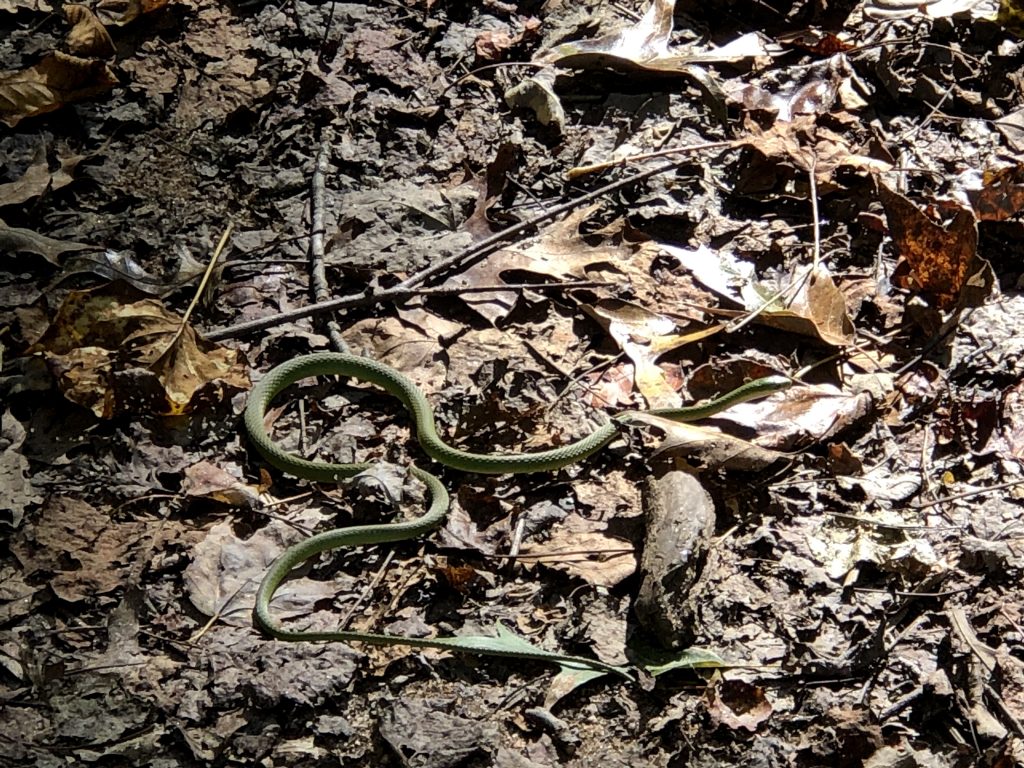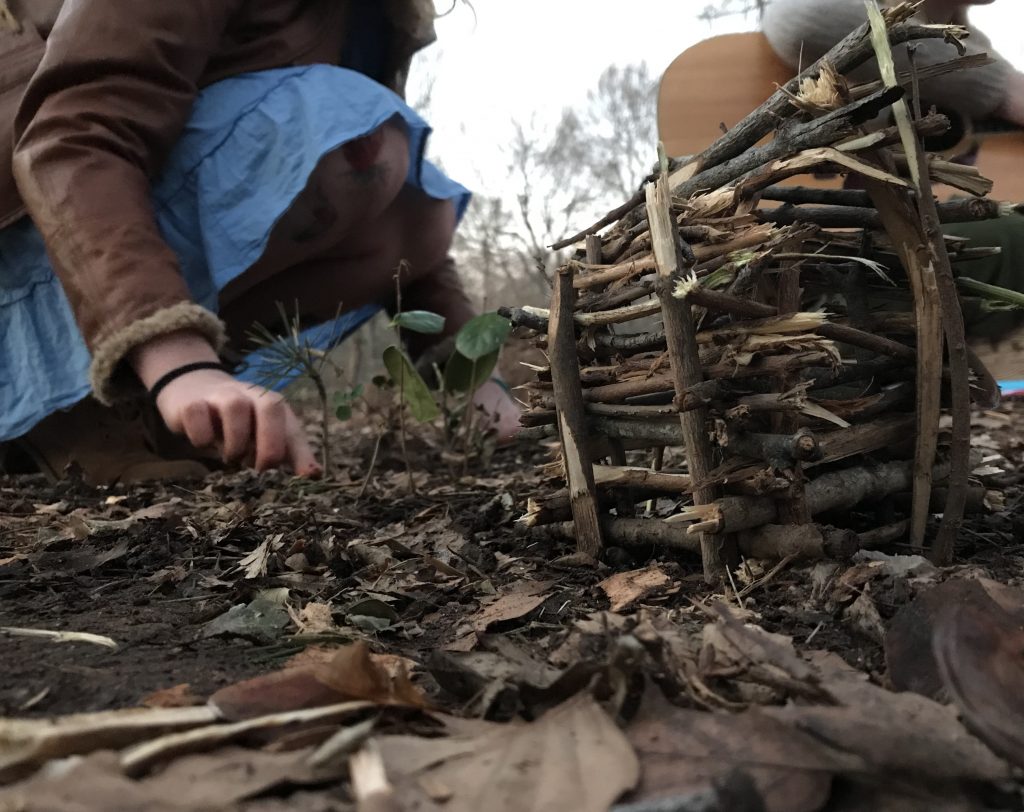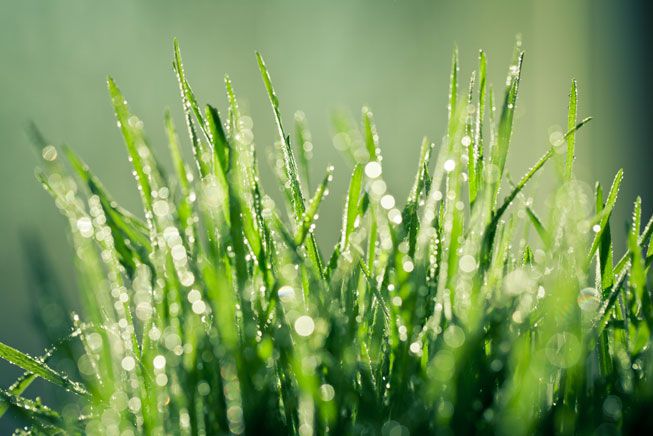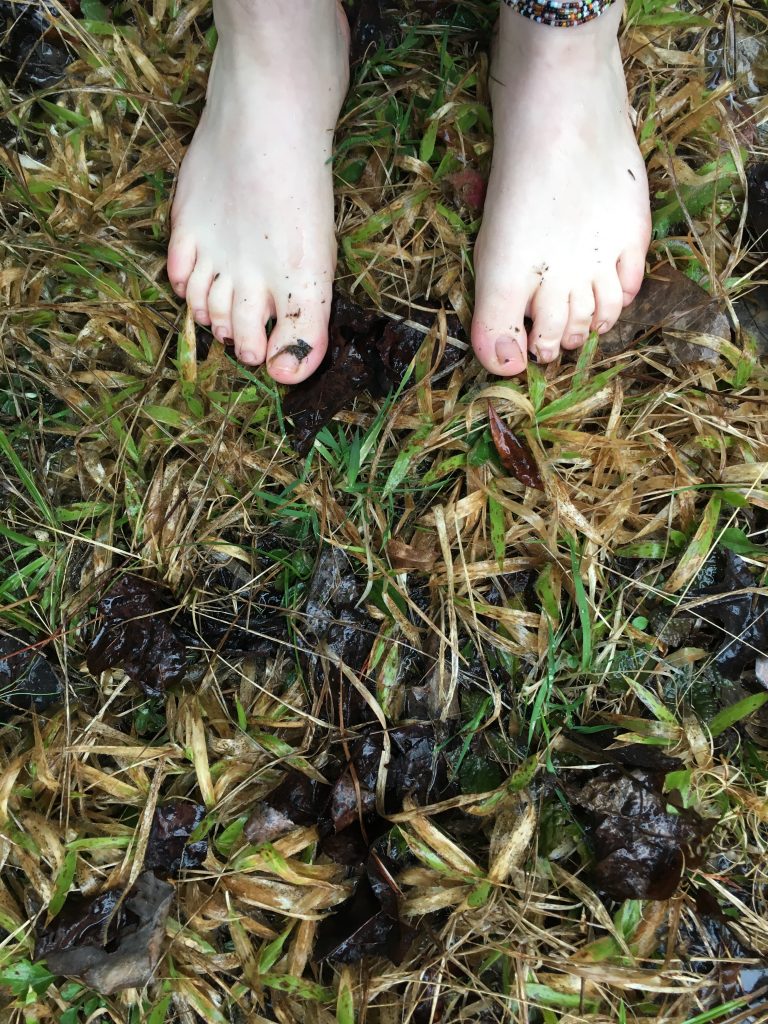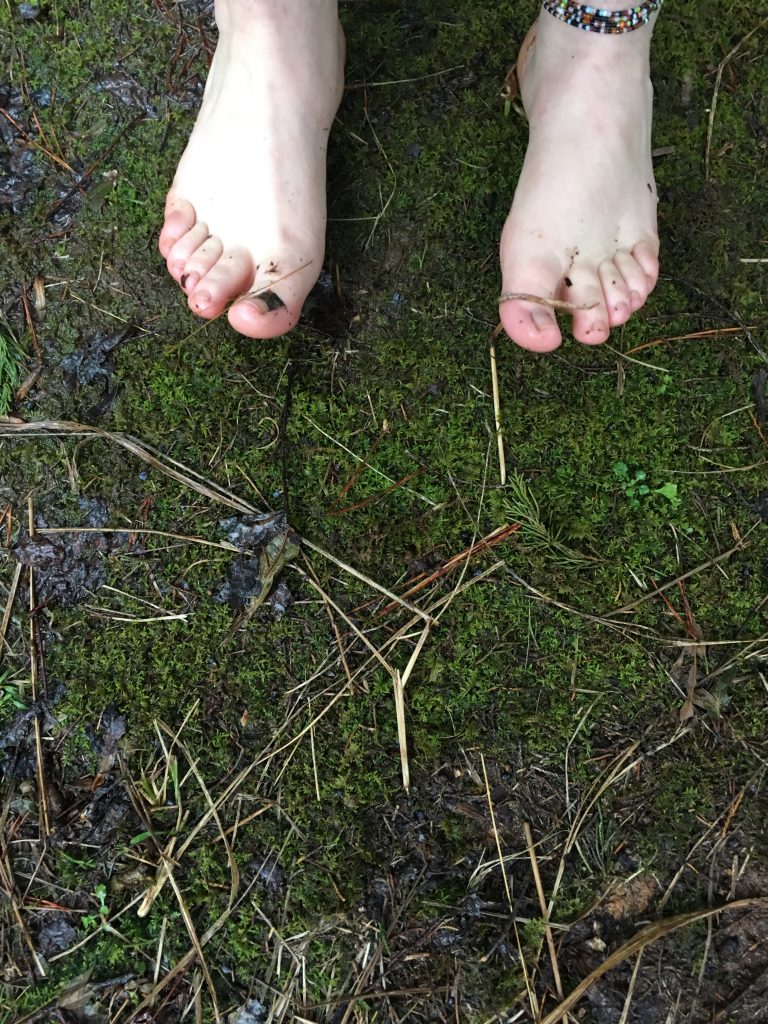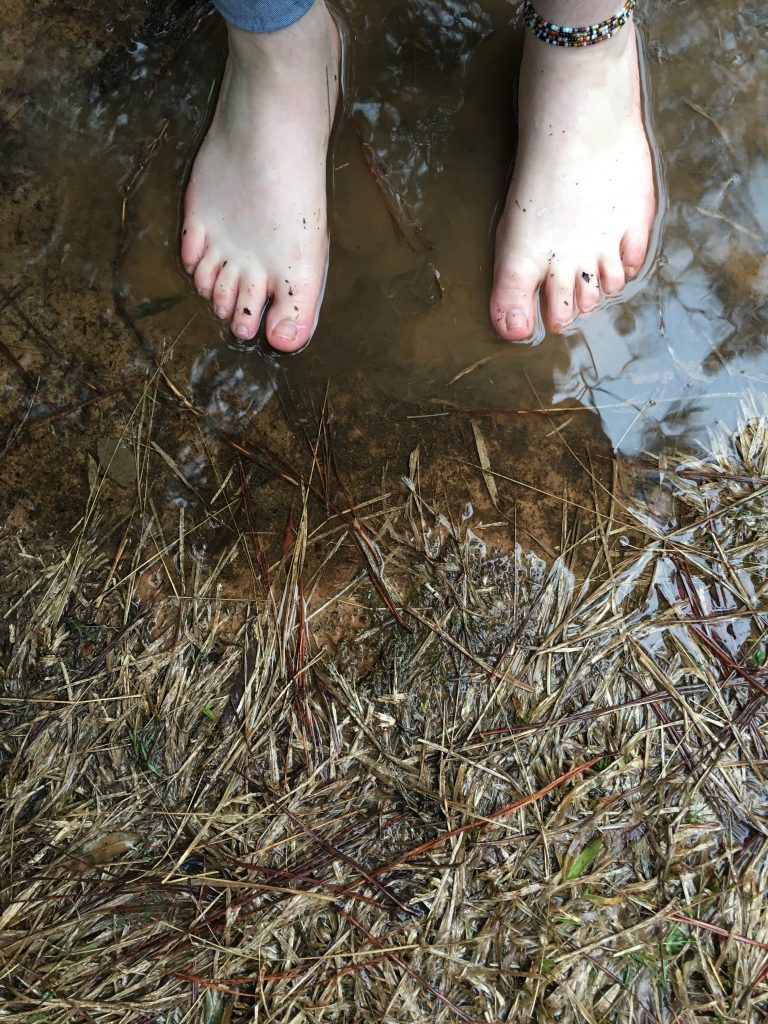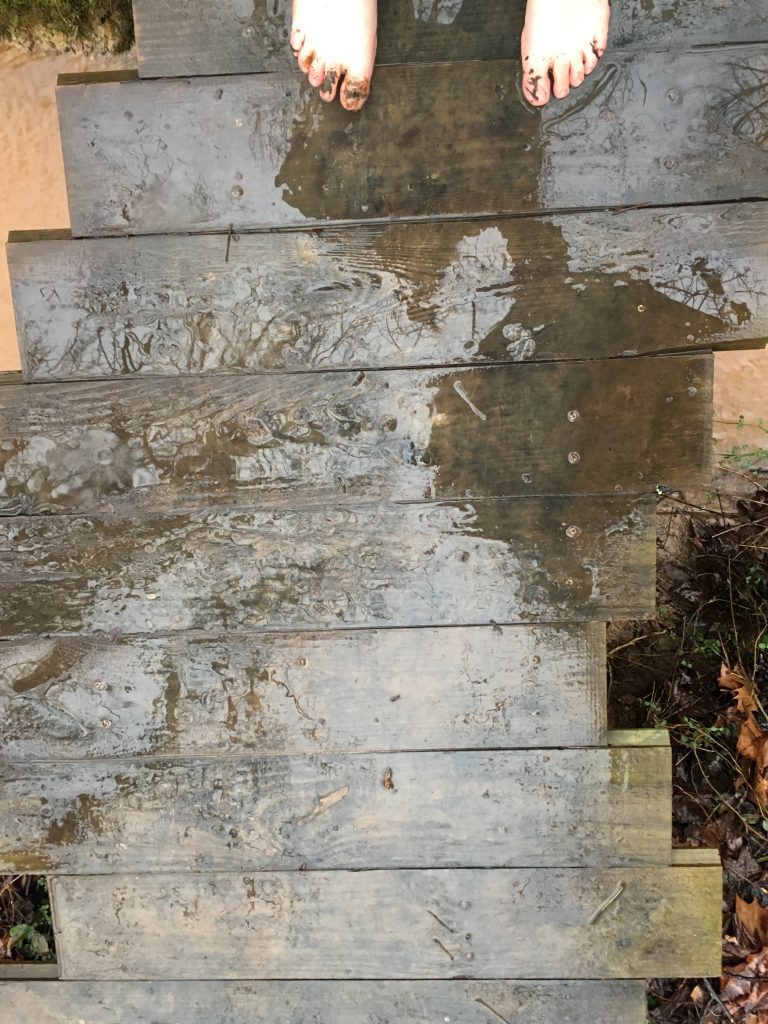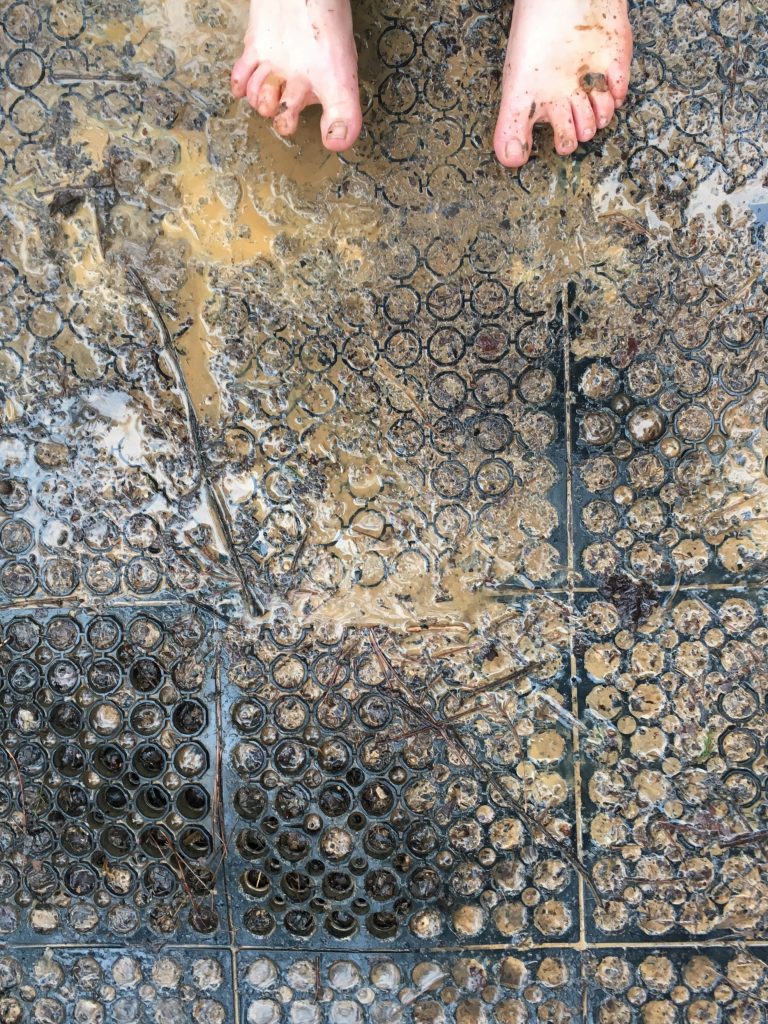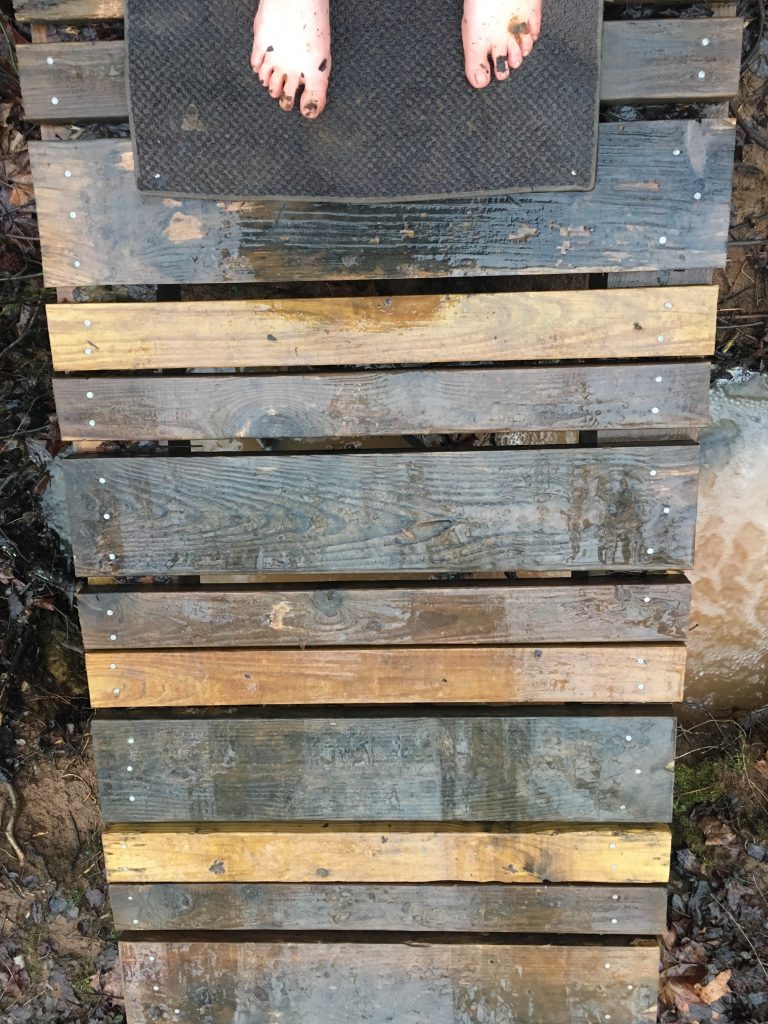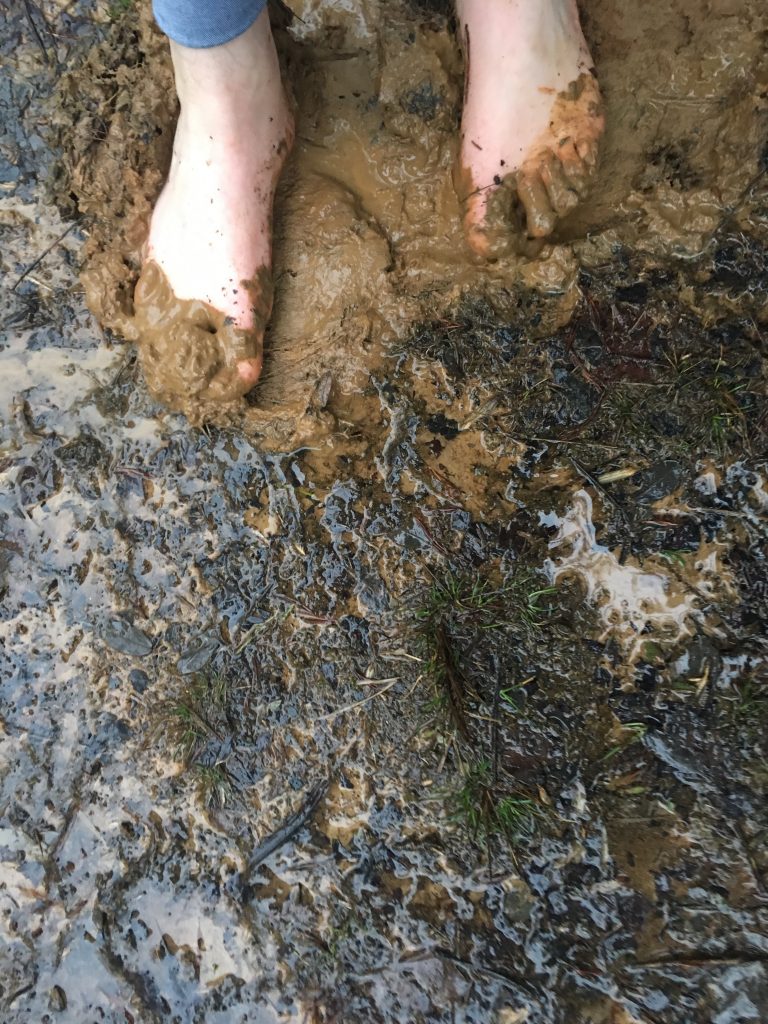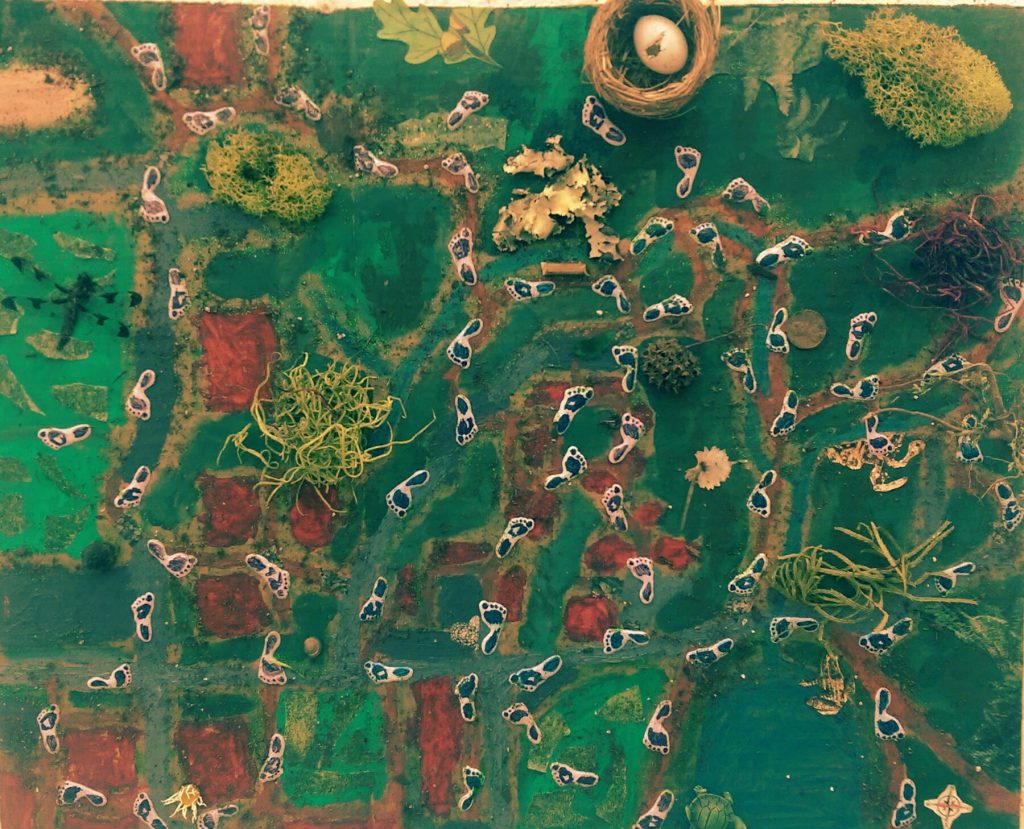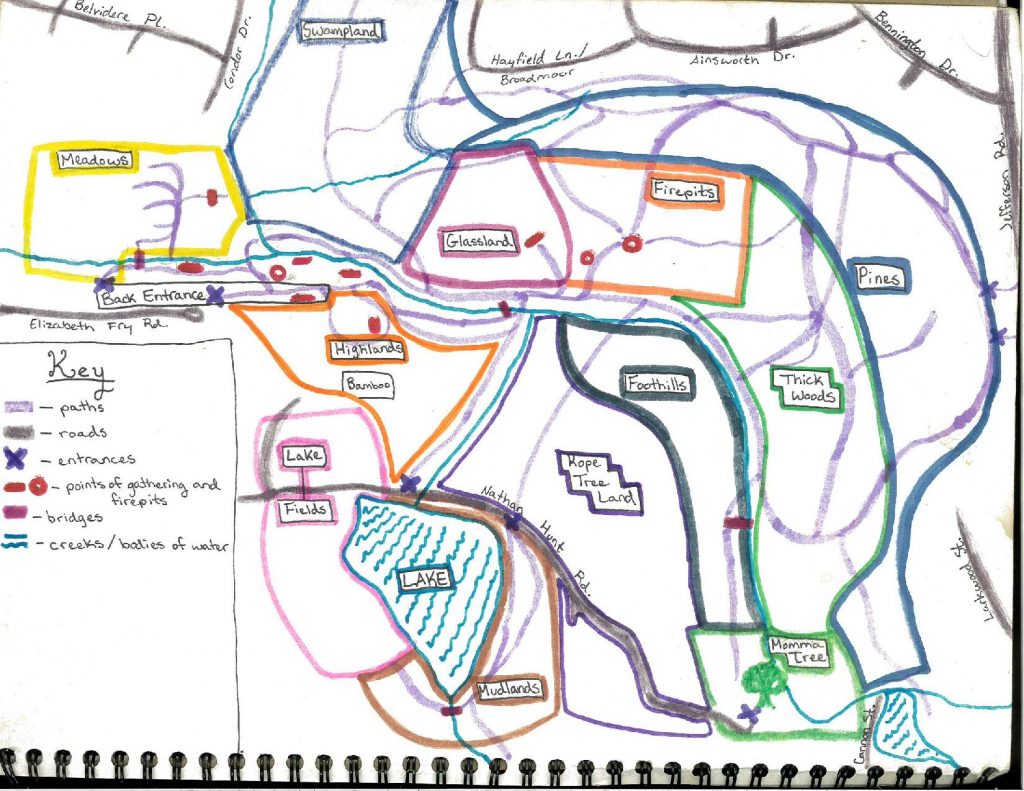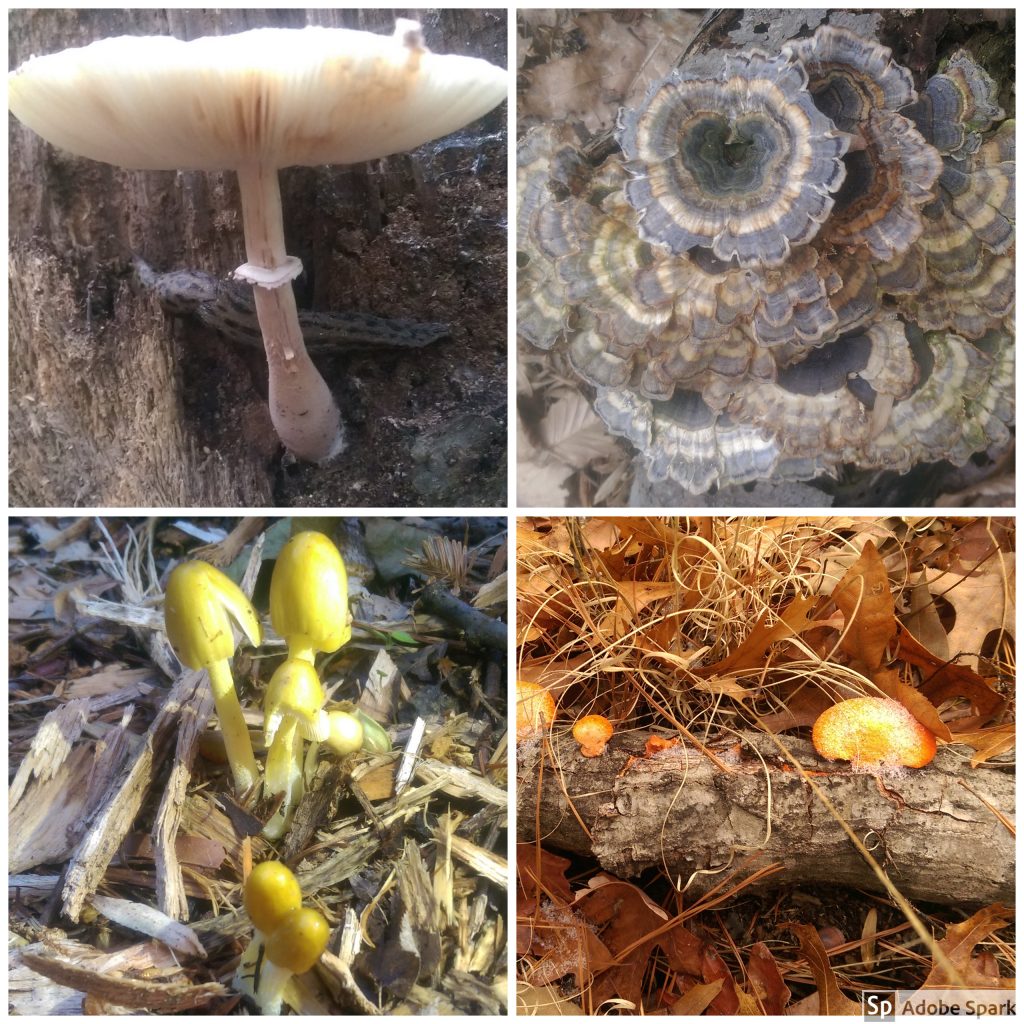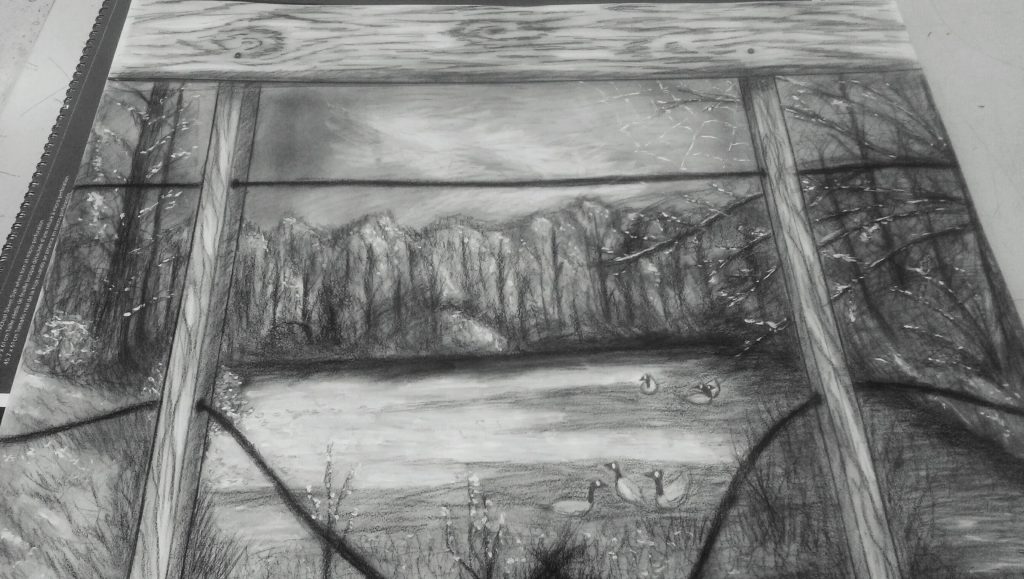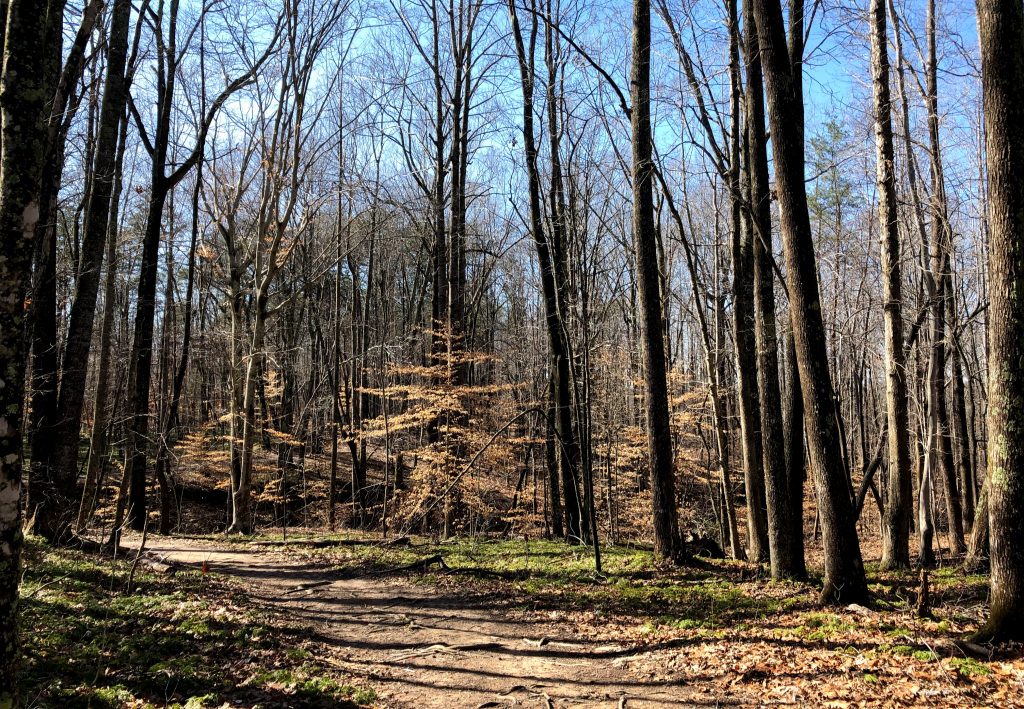
Triad Park is a sensory overload. Once you enter the woods, you see the towering evergreens, oaks, and maples swaying in the wind. Through them, Thrushes (in the spring), Sparrows, and Carolina Wrens hop and flitter on their way, basking in the beauty of the trees around them. Once they know of my presence, they either cautiously observe me or move along. The squirrels are braver than the birds. They have their eyes set on some nuts. While the birds and the squirrels meander through the forest, something else is bustling.
Beyond the sights of the woods, the sounds that accompany it are just as satisfying to experience. For instance, there’s a creek that runs through a large chunk of the trail. It provides sounds far more soothing than any jazz track or top 50 hit could attempt to create. In the creek, there exists a small universe of life; tadpoles swim about, ready to grow some legs and walk into their next phase of existence. During my childhood, my mom often took my sister and I down to the creek where we put a few tadpoles in a “bug-box” (a plastic container with holes poked in the lid) and slowly nursed them into frogs, which we then released back at the spot where we found them.

Apart from the gentle sounds of the creek, there is always the soothing humming of the wind rolling through the forest. On windy days, the trees bend (and sometimes snap) to the wind’s blustery will. However, what may seem chaotic to others is actually quite soothing to me…as long as a tree doesn’t fall on me. When I don’t hear the creek, the gentle breeze that walks the woods with me is always a welcome sound.
When there is not an excess of wind, I usually encounter a few interesting birds on my walk. One of these birds is the Red-bellied Woodpecker, or Melanerpes carolinus, as science likes to call it. These birds are native to the area around my home as well, so seeing them in another place is a wonderful sight. They usually breed in the eastern United States, which is probably why I see so much of them around here in the Guilford/Forsyth County area in North Carolina. Triad Park is on the border between Forsyth and Guilford County but is technically considered a part of Forsyth County. These details don’t matter to the Red-bellied Woodpecker.
Another type of woodpecker that is fond of Triad Park is the Pileated Woodpecker, whose scientific name is Dryocopus pileatus. Its distinct call lets its presence be known. However, I have only just come to memorize it. Before, I usually was confused until my mom pointed out that the sound belonged to the Pileated Woodpecker. One of the things that helped me memorize its identity is relating the call to the black-feathered body that I usually see swooping from tree to tree after hearing its call. Another point of memorization is the spot of red on its head. Its also a large bird, so being able to see it is rarely an issue. Triad Park’s wide array of wildlife is the main reason that I continue going back there. With each visit, I never know what I may encounter!
